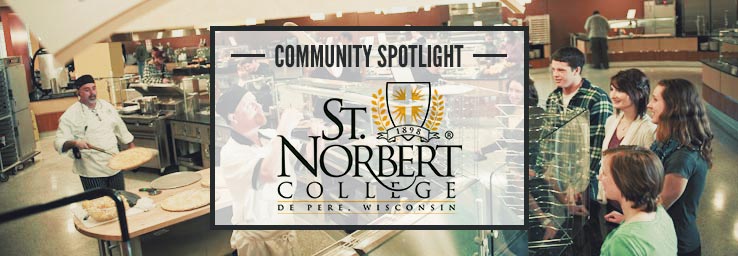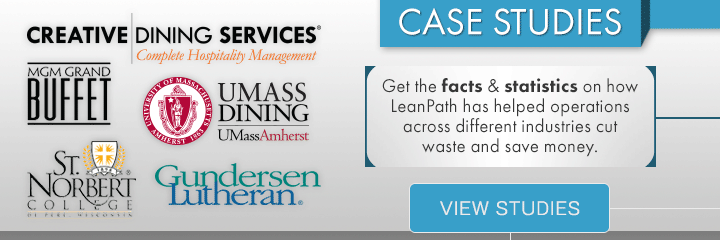Community Spotlight: St. Norbert College

St. Norbert College, in De Pere, Wisconsin, serves about 2,200 students out of one main kitchen on two floors in its newly renovated Ruth's Marketplace dining hall. With a goal to be a zero waste dining program, they had already transitioned to “trayless” dining, started a composting program, and purchased a waste pulping machine. However, they were still experiencing a lot of waste and had a hard time controlling ever-rising food costs.
At the start of the fall semester in 2014, they decided to implement the LeanPath 360 Food Waste Prevention program to help prevent food waste at its source and reduce food costs. We recently sat down with Mary Jo Morris, Director of Dining and Conference Services at St. Norbert College, to ask her about her team’s experience with the program so far.
What drove you to implement the LeanPath program?
“I was unable to get my arms around the continually rising food costs—I was watching that spiral out of control. I saw LeanPath come up on a NACUFS discussion list and had the company in the back of my mind. About a year ago I started doing a little more digging and thought ‘this looks like the model for us.’ How else can you get a handle on waste which is basically unseen? You’d need a full time staff person.”
How did you create buy-in for the program at the staff level?
“Our full-time staff members are really passionate about sustainability, so we were able to get buy in pretty easily. We unveiled the program the way LeanPath said we should. We first created buy-in with the managers. Stage setting was hugely important—emphasizing to the staff that this is not about penalizing behavior. We have concentrated on awarding the team and not penalizing the team.”
What are some of the changes you’ve made based on your waste data?
“Our menu changes so much that we’ve spent the last semester looking at trends. We’ve implemented things to reduce vegetable waste—using smaller pans and more cook-to-order. Casserole waste was another opportunity. We went back to standardized recipes and found way to batch them more. We’ve made some equipment changes. We’ve also introduced a new concept on the weekend: reducing our salad bar and implementing a build-your-own yogurt concept that’s been really popular.”
How have you used the food waste alerts and photos?
“The alerts have been very helpful. I go right into the alert and see what’s happening. It reminds me that the information is there and makes me think about the data rather than just looking weekly. Our chef can go right back to the team, see what the alert was about, and nip it.”
“The photos are wonderful. We would have a hard time figuring out the data without the photo.”
Have you been able to quantify savings in food costs?
“We are saving compared to where we were at the same time last year. With the way food costs are going up, that savings has to be related to what we’re doing. We will for sure see profits over and above our investment. So far we have reduced waste by 32% against our starting baseline.”
What changes have you seen in terms of team culture?
“I can’t imagine being without it and we’ve only had it for five months. I don’t know why I wasn’t thinking about this 10 years ago. Before we had no actionable way to get a handle on it—it changes the way we do things. This program provides a focus for the department to rally around and do the right thing for the environment. We have a way to solidly participate in St. Norbert’s commitment to sustainability.”
To see more specifics about how St. Norbert College is using the LeanPath system, including unique examples and waste data, check out their case study by clicking below.
